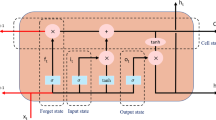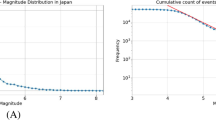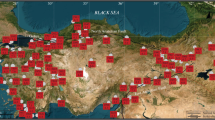Abstract
Natural disaster prediction is one of the main concerns of authorities globally. Disasters cause large-scale psychological, social, and economic damage; therefore, techniques to predict such events are essential to minimize their impacts. However, despite all efforts to estimate the occurrence of a disaster, making an accurate and robust forecast is a challenging task. In recent years, Deep Learning techniques have innovated several fields by learning the factors that contribute to the phenomena generation; also, biologically inspired concepts such as attention have provided cheap ways to allocate computational resources by consuming only the necessary information to solve the task. This work aims to develop and evaluate a feature-based temporal attentional model to predict the time remaining for an earthquake event by consuming seismic waves from the LANL Earthquake dataset. The proposed models comprehend four distinct architectures based on 1D-CNN, LSTM, and LSTM with self-attention mechanisms. Experimental results indicated that attention plays a vital role in learning temporal relations, with models achieving state-of-the-art results in the task.
Access this chapter
Tax calculation will be finalised at checkout
Purchases are for personal use only
Similar content being viewed by others
References
Rouet-Leduc, B.P.G.: Artificial Intelligence for Earthquake Forecasting (No. LA-UR-19-26395). Los Alamos National Lab. (LANL), Los Alamos, NM (United States) (2019)
Corbi, F., et al.: Machine learning can predict the timing and size of analog earthquakes. Geophys. Res. Lett. 46(3), 1303–1311 (2019)
World Bank, & United Nations: Natural hazards, unnatural disasters: the economics of effective prevention. The World Bank (2010)
LeCun, Y., Haffner, P., Bottou, L., Bengio, Y.: Object recognition with gradient-based learning. In: Forsyth, D.A., Mundy, J.L., di Gesú, V., Cipolla, R. (eds.) Shape, Contour and Grouping in Computer Vision. LNCS, vol. 1681, pp. 319–345. Springer, Heidelberg (1999). https://doi.org/10.1007/3-540-46805-6_19
Sherstinsky, A.: Fundamentals of recurrent neural network (RNN) and long short-term memory (LSTM) network. Physica D 404, 132306 (2020)
Kiranyaz, S., Avci, O., Abdeljaber, O., Ince, T., Gabbouj, M., Inman, D.J.: 1D convolutional neural networks and applications: a survey. Mech. Syst. Signal Process. 151, 107398 (2021)
Rumelhart, D.E., Hinton, G.E., Williams, R.J.: Learning representations by back-propagating errors. Nature 323(6088), 533–536 (1986)
Goodfellow, I., Bengio, Y., Courville, A., Bengio, Y.: Deep Learning, vol. 1, no. 2. MIT Press, Cambridge (2016)
Hochreiter, S., Schmidhuber, J.: Long short-term memory. Neural Comput. 9(8), 1735–1780 (1997)
Olah, C.: Understanding LSTM Networks (2015). http://colah.github.io/posts/2015-08-Understanding-LSTMs
Al Banna, M.H., et al.: Application of artificial intelligence in predicting earthquakes: state-of-the-art and future challenges. IEEE Access 8, 192880–192923 (2020)
Yang, X., Huang, K., Zhang, R., Goulermas, J.Y.: A novel deep density model for unsupervised learning. Cogn. Comput. 11(6), 778–788 (2019)
Correia, A.D.S., Colombini, E.L.: Attention, please! A survey of Neural Attention Models in Deep Learning. arXiv preprint arXiv:2103.16775 (2021)
Bhandarkar, T., Satish, N., Sridhar, S., Sivakumar, R., Ghosh, S.: Earthquake trend prediction using long short-term memory RNN. Int. J. Electr. Comput. Eng. (2088-8708), 9(2) (2019)
Wang, Q., Guo, Y., Yu, L., Li, P.: Earthquake prediction based on spatio-temporal data mining: an LSTM network approach. IEEE Trans. Emerg. Top. Comput. 8(1), 148–158 (2017)
Li, R., Lu, X., Li, S., Yang, H., Qiu, J., Zhang, L.: DLEP: a deep learning model for earthquake prediction. In: 2020 International Joint Conference on Neural Networks (IJCNN), pp. 1–8. IEEE (2020)
Kanarachos, S., Christopoulos, S.R.G., Chroneos, A., Fitzpatrick, M.E.: Detecting anomalies in time series data via a deep learning algorithm combining wavelets, neural networks and Hilbert transform. Expert Syst. Appl. 85, 292–304 (2017)
The United Nations Conference on Sustainable Development Secretariat: Disaster Risk Reduction and Resilience Building. Rio de Janeiro, Brazil, p. 4 (2012)
Reddy, R.V.K., Rao, B.S., Raju, K.P.: Handwritten Hindi digits recognition using convolutional neural network with RMSprop optimization. In: 2018 Second International Conference on Intelligent Computing and Control Systems (ICICCS), pp. 45–51. IEEE (2018)
Mousavi, S.M., Ellsworth, W.L., Zhu, W., Chuang, L.Y., Beroza, G.C.: Earthquake transformer-an attentive deep-learning model for simultaneous earthquake detection and phase picking. Nat. Commun. 11(1), 1–12 (2020)
Acknowledgment
This study was financed in part by the Coordenação de Aperfeiçoamento de Pessoal de Nível Superior – Brasil (CAPES) – Finance Code 001.
Author information
Authors and Affiliations
Editor information
Editors and Affiliations
Rights and permissions
Copyright information
© 2021 Springer Nature Switzerland AG
About this paper
Cite this paper
de Santana Correia, A., Cleveston, I., dos Santos, V.B., Avila, S., Colombini, E.L. (2021). An Attentional Model for Earthquake Prediction Using Seismic Data. In: De La Prieta, F., El Bolock, A., Durães, D., Carneiro, J., Lopes, F., Julian, V. (eds) Highlights in Practical Applications of Agents, Multi-Agent Systems, and Social Good. The PAAMS Collection. PAAMS 2021. Communications in Computer and Information Science, vol 1472. Springer, Cham. https://doi.org/10.1007/978-3-030-85710-3_5
Download citation
DOI: https://doi.org/10.1007/978-3-030-85710-3_5
Published:
Publisher Name: Springer, Cham
Print ISBN: 978-3-030-85709-7
Online ISBN: 978-3-030-85710-3
eBook Packages: Computer ScienceComputer Science (R0)




